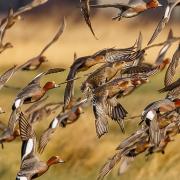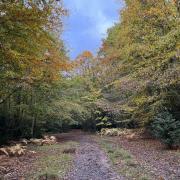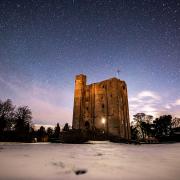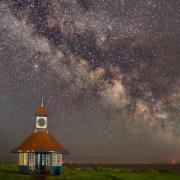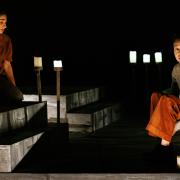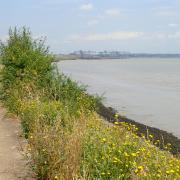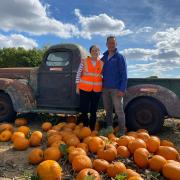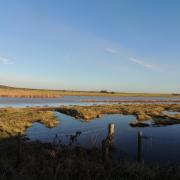Despite this being Essex Life, to begin the wild walk this month we must start a stone’s throw into Suffolk at Flatford Mill on the northern bank of the River Stour. Set within the serenity of the Dedham Vale Area of Outstanding Natural Beauty, Flatford Mill – a Grade I listed watermill mentioned in the Domesday Book of 1087 – and many of the unchanged surrounding views were made famous by 19th century landscape painter John Constable who lived nearby.
The fame of paintings such as The Hay Wain and Boatbuilding near Flatford Mill has led to the whole area being lovingly referred to as Constable Country, and a meander beside the Stour or simply watching the dappled sunlight bounce off the much-photographed Willy Lott’s House feels like stepping into one of his paintings. Willy Lott was born in the house, named after him in 1761, and grew up to work the 39 acres around Flatford as a tenant farmer. When I was 17, I was lucky enough to visit Flatford Mill on a school-trip and even stay the night in Willy Lott’s iconic house. It was only recently that realised what an incredibly historical experience that was.

The National Trust painstakingly maintain the Flatford Estate, from building restoration to ensuring that traditional farming methods are continued. Refreshment in the cosy river view tearoom, as well as a peruse around the giftshop, will support the trust’s work and is a lovely start to the walk. After breakfast, you will almost immediately cross the arched bridge over the Stour into Essex. You may notice, as you cross the bridge, that (especially in the summer months) between 9am and 4pm you can hire wooden rowing boats to fully immerse yourself in the reedy riverside landscape alongside moorhens and water voles. It truly looks like a scene from Kenneth Grahame’s Wind in the Willows. Rowing boats can also be hired from the historical and picturesque market town of Dedham, our destination at the heart of Constable Country.
Walking across quintessential English countryside, the odd tree and line of hedgerow interrupt some of the country’s most beautiful lowlands and water meadows. Birds chirp, water trickles, and there is a profound sense that such wild sights and sounds have remained unchanged for centuries. Cattle graze freely, leaving a minefield of cow pats to negotiate as you walk, and their presence always reminds me of one particular childhood visit to Flatford. We hired a rowing boat and worked our way downriver. As we came close to the riverbank, a cow entered the water for a drink and – being five years old – I was terrified! Of course, there was nothing to worry about, but the experience has permanently etched itself onto my memory, nonetheless.

In no time at all you will find yourself in delightful Dedham. There are beautiful buildings, a museum, gallery, delicatessen and multiple cafés and tearooms to choose from – my favourite is situated inside Dedham Art and Craft Centre. I can only agree with architectural historian, Nickolaus Pevsner, who wrote in 1954 that: ‘There is nothing at Dedham to hurt the eye.’
If you would like to learn more about the history of Flatford, visit nataionaltrust.org.uk/visit/Suffolk/flatford/history-of-flatford
Distance: 2 miles
Time taken: 1.5 hours




